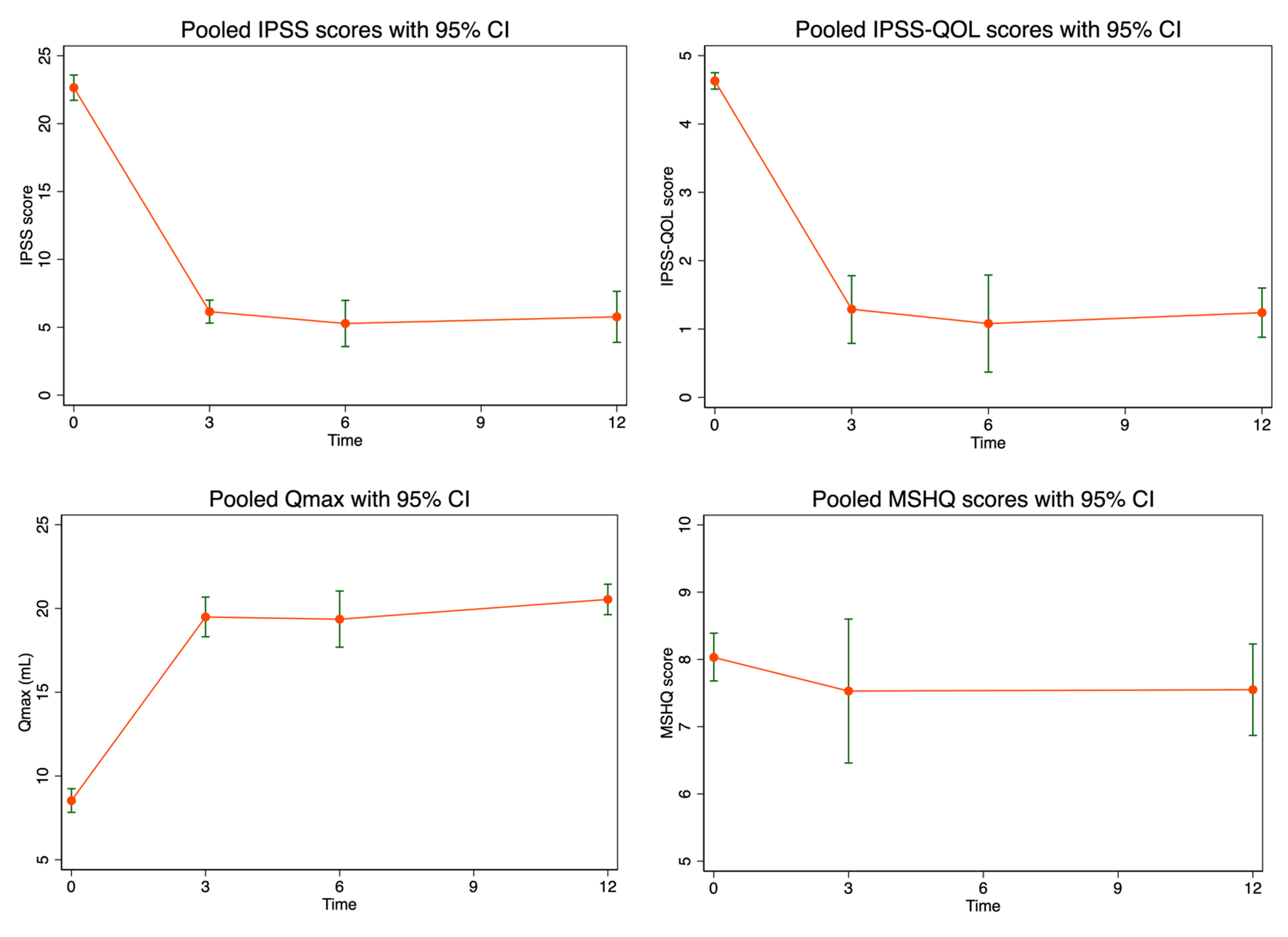Back
Poster, Podium & Video Sessions
Podium
PD45: Benign Prostatic Hyperplasia: Surgical Therapy & New Technology IV
PD45-06: Urinary and sexual outcomes after Aquablation in men with benign prostate hyperplasia: A systematic review and meta-analysis
Sunday, May 15, 2022
1:50 PM – 2:00 PM
Location: Room 252
David Chen, Liang Qu, Howard Webb, Michael Harvey, Kirby Qin, Melbourne, Australia, Sari Khaleel, New York City, NY, Ahmed Adam, Johannesburg, South Africa, Damien Bolton, Marlon Perera*, Melbourne, Australia

Marlon L. Perera, MD
Memorial Sloan Kettering Cancer Center
Podium Presenter(s)
Introduction: Aquablation is a novel treatment for benign prostatic hyperplasia, utilising high pressure non-heated water and combines programmed robotics and imaging guidance. We aimed to perform a systematic review and meta-analysis to investigate the improvements of lower urinary tract symptoms in men with benign prostatic hyperplasia treated with prostatic Aquablation.
Methods: In accordance with the PRISMA guidelines, we performed a literature search of clinical trials using MEDLINE, EMBASE and Cochrane Libraries and retrieved published work on Aquablation for the treatment of benign prostatic hyperplasia up to August 2021. Unpublished work, case reports, conference proceedings, editorial comments and letters were excluded. Risk of bias was assessed using the MINORS tool. Raw means and mean differences were meta-analysed to produce summary estimates for pre- versus post- International Prostate Symptom Score (IPSS), maximum flow rate (Qmax), and Male Sexual Health Questionnaire (MSHQ) value changes. An inverse-variance weighted random effects model was utilised.
Results: We included seven studies, comprising 551 patients and evaluated various urologic parameters. At 3 month, the IPSS raw mean difference from baseline was -16.475 [95% CI -15.264 to -17.686, p<0.001], with improvements sustained to 12 months. Similarly, Qmax improved by +1.96 [95% CI 10.015 to 11.878, p <0.001] from pre to post at 3 months post-operatively. In addition, MSHQ change pooled effect size was -0.55 [95% CI -1.621 to 0.531, p=0.321] change in MSHQ score from pre to post at 3 months. Meta-analyses for some outcomes had large statistical heterogeneity or evidence for publication bias.
Conclusions: Aquablation appears to improve lower urinary tract symptoms in men with benign prostatic hyperplasia while providing relatively preserved sexual function. Further research should confirm these preliminary results.
Source of Funding: NA

Methods: In accordance with the PRISMA guidelines, we performed a literature search of clinical trials using MEDLINE, EMBASE and Cochrane Libraries and retrieved published work on Aquablation for the treatment of benign prostatic hyperplasia up to August 2021. Unpublished work, case reports, conference proceedings, editorial comments and letters were excluded. Risk of bias was assessed using the MINORS tool. Raw means and mean differences were meta-analysed to produce summary estimates for pre- versus post- International Prostate Symptom Score (IPSS), maximum flow rate (Qmax), and Male Sexual Health Questionnaire (MSHQ) value changes. An inverse-variance weighted random effects model was utilised.
Results: We included seven studies, comprising 551 patients and evaluated various urologic parameters. At 3 month, the IPSS raw mean difference from baseline was -16.475 [95% CI -15.264 to -17.686, p<0.001], with improvements sustained to 12 months. Similarly, Qmax improved by +1.96 [95% CI 10.015 to 11.878, p <0.001] from pre to post at 3 months post-operatively. In addition, MSHQ change pooled effect size was -0.55 [95% CI -1.621 to 0.531, p=0.321] change in MSHQ score from pre to post at 3 months. Meta-analyses for some outcomes had large statistical heterogeneity or evidence for publication bias.
Conclusions: Aquablation appears to improve lower urinary tract symptoms in men with benign prostatic hyperplasia while providing relatively preserved sexual function. Further research should confirm these preliminary results.
Source of Funding: NA


.jpg)
.jpg)